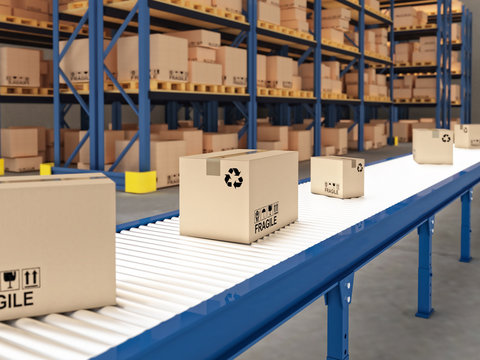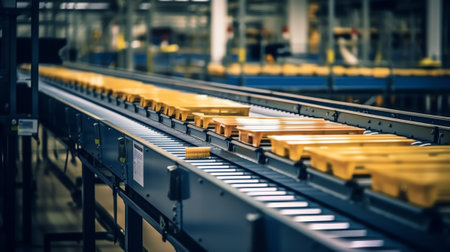A conveyor belt is a mechanical system consisting of a continuous loop of flexible material that is used for the transportation of goods, materials, or products from one point to another. Conveyor belts are a common feature in various industries and serve the purpose of automating the movement of items, thereby increasing efficiency and reducing the need for manual labor.
How do conveyor systems work?
Conveyor belts have become integral components in a wide range of industries, providing efficient and automated solutions for material transport. Let’s delve into some common uses, types, and the benefits that conveyor belts offer.

A) What are the Functions of Conveyor Belt:
Conveyor belts play a crucial role in modern industries by automating and facilitating the movement of materials, goods, and products, resulting in increased efficiency, reduced labor costs, and improved safety standards.
Manufacturing and Assembly: Conveyor belts are crucial in manufacturing and assembly lines, where they move products through different stages of production. This ensures continuous workflow, reduced manual handling, and consistent output.
Mining and Quarrying: In the mining industry, conveyor belts transport heavy materials like ores, coal, and minerals from extraction points to processing facilities, improving efficiency and worker safety.
Agriculture: Conveyor belts are employed in agriculture for tasks like sorting, grading, and packaging fruits, vegetables, and grains, streamlining post-harvest processes.
Food Processing: Food industries use conveyor belts to automate processes such as washing, sorting, baking, and packaging, ensuring hygienic handling and efficient production.
Warehousing and Logistics: Conveyor belts play a pivotal role in warehouses and distribution centers, facilitating the movement of goods from storage to packaging and shipment.
Automotive Industry: Conveyor belts aid in the automotive sector by transporting vehicle components through assembly lines, optimizing production and reducing manual labor.
Airports: Baggage handling systems in airports rely on conveyor belts to transport luggage efficiently from check-in to departure gates.
Construction: Conveyor belts assist in construction by transporting bulk materials like sand, gravel, and concrete, enhancing productivity at job sites.
B) What are the Types of Conveyor Belt:
Flat Belt Conveyors: These are versatile and suitable for moving a variety of products on a flat surface. They’re commonly used in industries like food processing and manufacturing.
Roller Conveyors: Roller conveyors use a series of rollers to move products, making them ideal for heavier loads and assembly lines.
Belt Conveyors: Similar to flat belt conveyors, these systems use belts to move products but can handle steeper inclines and declines.
Screw Conveyors: These systems use a helical screw to transport bulk materials such as grains, powders, and sludges, making them ideal for inclined or vertical transport.
Overhead Conveyors: Overhead systems move products along suspended tracks, conserving floor space and facilitating continuous transport.
Bucket Conveyors: These use buckets to transport bulk materials vertically, often used in industries like agriculture and mining.

C) Benefits of Conveyor Systems:
Efficiency: Conveyor belts streamline processes, reducing the need for manual handling and minimizing production bottlenecks.
Labor Savings: Automation via conveyor belts reduces the reliance on manual labor, leading to cost savings and increased safety.
Consistency: Conveyor belts provide consistent movement, leading to uniform product quality and reduced variability.
Higher Throughput: Conveyor systems increase the rate of material transport, allowing industries to handle larger volumes in less time.
Space Optimization: Different conveyor types allow for space optimization, particularly useful in industries with limited floor space.
Safety: Conveyor belts reduce the risk of injuries related to manual material handling, such as lifting heavy objects.
Flexibility: Various conveyor types can be customized to suit specific needs, accommodating different sizes, shapes, and weights of products.
Real-time Monitoring: Modern conveyor systems can be equipped with sensors and IoT technology for real-time monitoring of performance and maintenance needs.
Conclusion:
Conveyor belts play a vital role across industries, offering efficiency, automation, and improved processes. As technology advances, the benefits of these systems continue to grow, leading to more streamlined and productive operations.

